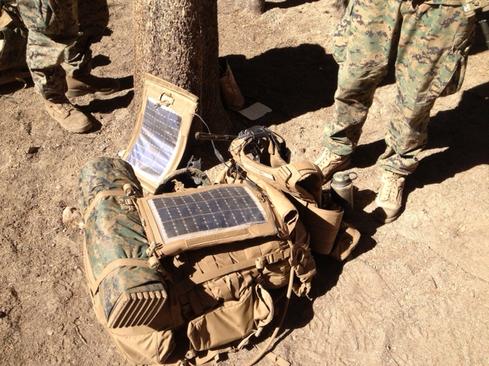Google Glass Tested For Air Force JumpsGoogle Glass Tested For Air Force Jumps
Air Force pilot tests Google's wearable technology for pararescue jumpers and other battlefield operations.


Solar-Powered Wearable Tech Lightens Marines' Loads
Solar-Powered Wearable Tech Lightens Marines' Loads (Click image for larger view and slideshow.)
For those serving in the military, having situational awareness -- or knowing what's happening all around -- is crucial. Staring at a laptop screen is not an ideal scenario for a warfighter, so the Air Force is turning to Google Glass as a possible solution to the challenge.
Researchers at the Air Force's 711th Human Performance Wing are leading a program called Battlefield Air Targeting, Man-Aided Knowledge (BATMAN), which focuses on prototype technologies and interfaces that can support pararescue jumpers (PJ) and joint tactical air controllers (JTAC). BATMAN is currently piloting Google Glass, a wearable technology with optical head-mounted display, to assist PJs in their operations.
Since the roles of pararescue jumpers vary depending on the mission -- whether it's search and rescue or triage -- they require dynamic interfaces and hardware to adapt to the fluidity of mission objectives, according to the Air Force. The BATMAN research team is developing a medical app that can be used with Google Glass and a smartphone to monitor vitals of casualties during rescue missions. The app would provide all the vitals through remote sensors, allowing PJs to assess which patients are most critical and need immediate assistance, said Andres Calvo, a software developer and civilian contractor at the Air Force Research Laboratory's 711 Human Performance Wing.
[Want to be a Google Glass Explorer? Here's how you can join: Google Glass Goes Public.]
The Air Force is testing Google Glass with tablets and smartphones as a complementary technology, not as a replacement.
In addition to developers, the BATMAN team includes behavioral scientists and psychologists who are researching how various interfaces -- such as laptops, tablets, smartphones, and wearables -- affect a warfighter's awareness. "The result isn't an app but a better understanding of how, for example, you can interact with Google Glass in your environment," Calvo explained.
Google Glass isn't the only technology with heads-up display on the Defense Department's (DOD) radar. "Across the DOD we have a need to provide high situational awareness for warfighters. The goal here is to find the best heads-up display of information portrayal so the warfighter can be more effective in his various roles, whether or not they be in combat or a humanitarian mission," said Dr. Gregory Burnett, chief engineer for the BATMAN program.
The Air Force received the wearable technology through the Google Glass Explorer Program, which requires interested parties to submit an application for approval and a payment of $1,500. Earlier this month, Google extended the Explorer Program to businesses. Glass At Work is an initiative created to promote the computerized eyewear in the workplace. And on April 15, Google will open up the program to adults based in the US. The company said it has a limited number of spots available to consumers interested in trying out the technology.
Join us at GTEC, Canada's government technology event. Over 6,000 participants attend GTEC -- Government Technology Exhibition And Conference each year to exchange ideas and advance the business of information and communications technology (ICT) in government. Don't miss thought-provoking keynotes, workshops, panels, seminars, and roundtable discussions on a comprehensive selection of ICT topics presented by leading public sector and industry experts. Register for GTEC with marketing code MPIWKGTEC and save $100 on entire event and conference passes or for a free expo pass. It happens Oct. 27 to 30 in Ottawa.
About the Author
You May Also Like






